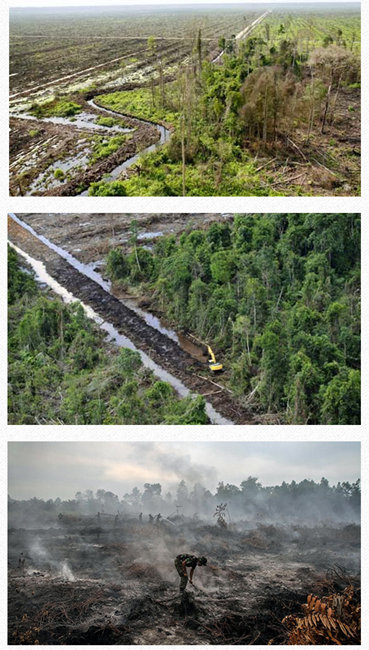What is palm oil? What's wrong with palm oil?
Industry news / Chat on line / Give me a price / Date: April 19, 2018

Palm fruit bunches
Palm oil is an edible vegetable oil high in saturated fats and free of trans fats.
The oil palm tree (Elaeis guineensis) is a native to West Africa and was imported into SE Asia in the mid 19th century. Oil palm flourishes in the humid tropics and produces high yield when grown 10 degrees north and south of the equator.
Palm fruit develops in dense bunches weighing 10 kilograms (kg) or more and containing more than a thousand individual fruits similar in size to a small plum which tree produces 2 types of oil. Palm oil (PO) is obtained from the flesh of the fruit and Palm Kernel Oil (PKO) is produced by extracting the oil from the internal seed (Kernel).
Every oil palm tree requires approximately 3m diameter clear around the base of each tree to allow full growth. Oil palm is highly productive crop which is capable of yielding more oil from less land than any other vegetable oil in existence. One oil palm tree will produce ongoing fruit for up to 30 years deeming the crop as high yielding and sustainable..
Palm Oil is used in around 50% of products consumers purchase and use on a daily basis. Palm Oil and derivatives otherwise known as fractions of the oil are used in the manufacture of prepackaged food, cosmetics, cleaning products, hair care, soaps and personal care items. Palm Wax is used in the manufacture of candles.
Palm Oil is also used to manufacture bio fuel and has become what is called the green fuel option for Motor Vehicles, shipping and Aircraft fuel. Palm is also used as feed for livestock named as palm kernel cake (PKC) which is a by-product of palm kernel oil. PKC is considered a medium grade protein feed used to fatten cattle and other livestock.

Problems in palm oil production
Indonesia is being deforested faster than any other country in the world, and it has everything to do with one product: palm oil.
Large areas of tropical forests and other ecosystems with high conservation values have been cleared to make room for oil palm plantations, essentially killing the biodiversity of the ecosystems that they replace. Many plantations in Southeast Asia are on peat soils, which until recently were covered by peat swamp forests. The drainage of these carbon-rich organic soils for plantations is causing massive greenhouse gas emissions.
The cheapest and fastest way to clear land for plantations is slash and burn. Fires in Indonesia produce some of the world’s worst pollution, sending suffocating smog to cities hundreds of miles away in Malaysia and Singapore.
Clearing rainforest to make way for plantations has taken a heavy toll on local communities, destroyed natural habitats for endangered species, and become a critical factor in climate change. Replacing natural forests with palm oil plantations vastly diminishes the ability of vegetation to capture and store carbon dioxide. It’s estimated that deforestation contributes up to 20 percent of global warming.
Indonesia and Malaysia account for around 87% of global palm oil production and the demand for the cheap oil continues to grow.
According to WWF (World Wildlife Fund) there are approximately 20 million hectares of abandoned land in Indonesia that could be used for palm oil plantations, however, many palm oil companies are tied in with logging firms. Timber is extremely valuable, therefore clearing virgin forest they get money twice, once for the timber and again for the produce from the oil palm trees.
Other issues surrounding unregulated palm production are human rights issues, slash and burn practices to clear land, illegal land grabs, child labour and leakage of chemicals into water supply.
Indonesia averaged 917,000 ha of natural forest loss per year between 2009 and 2013, more than half of which was outside concessions



